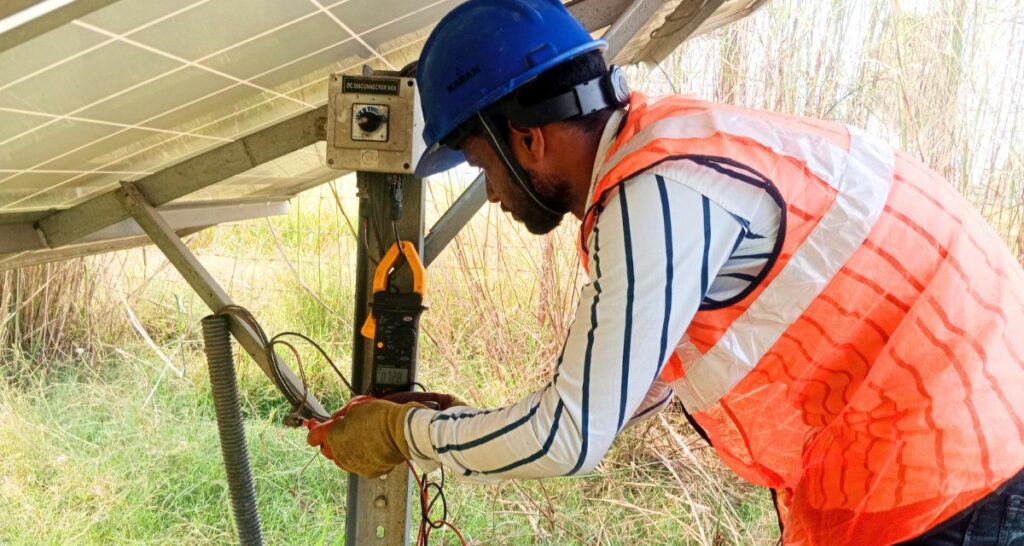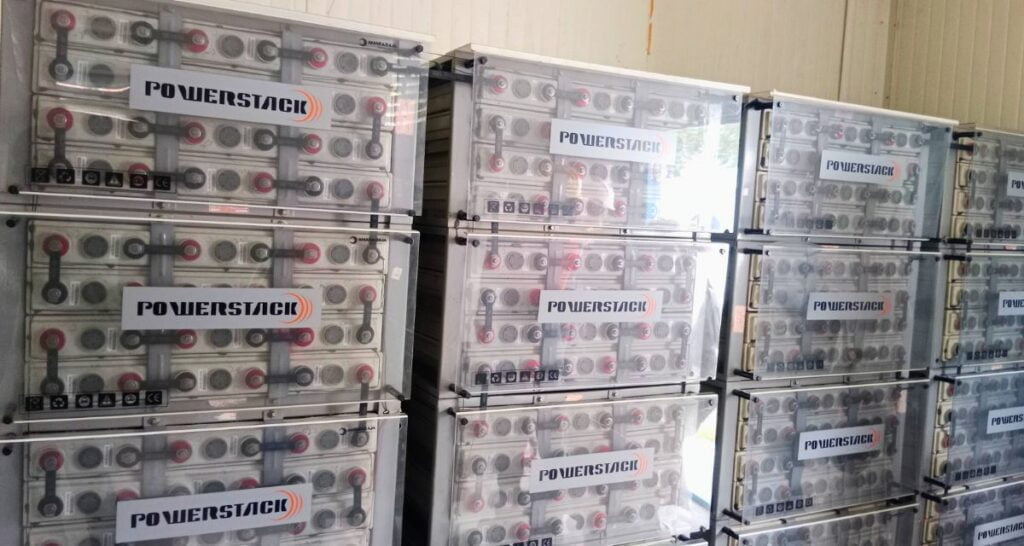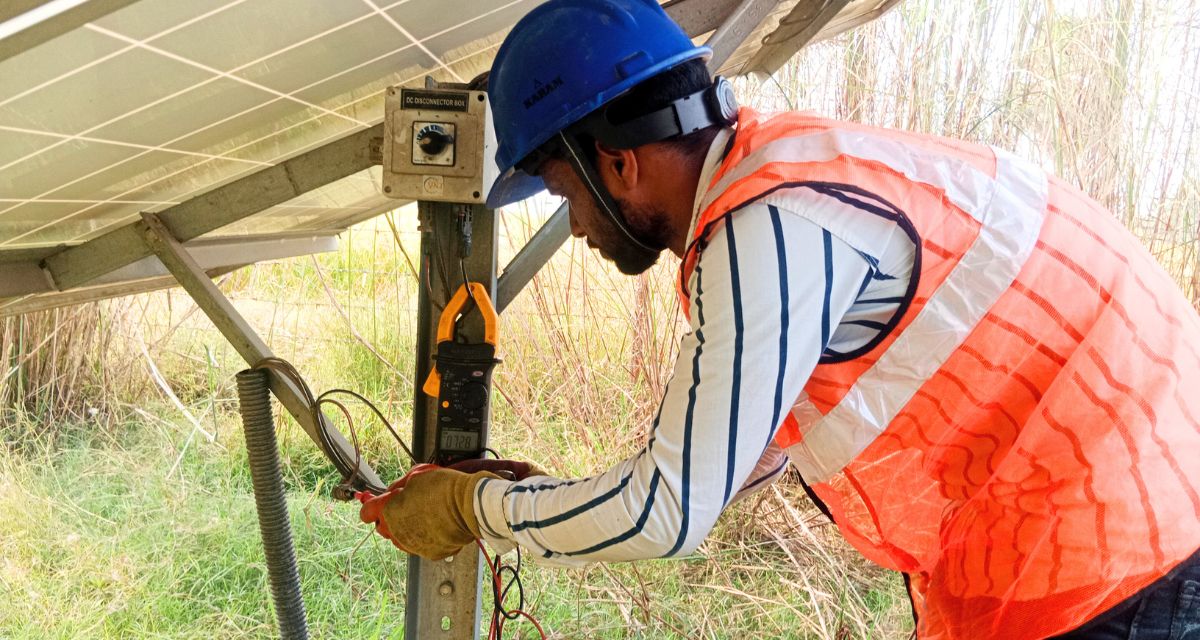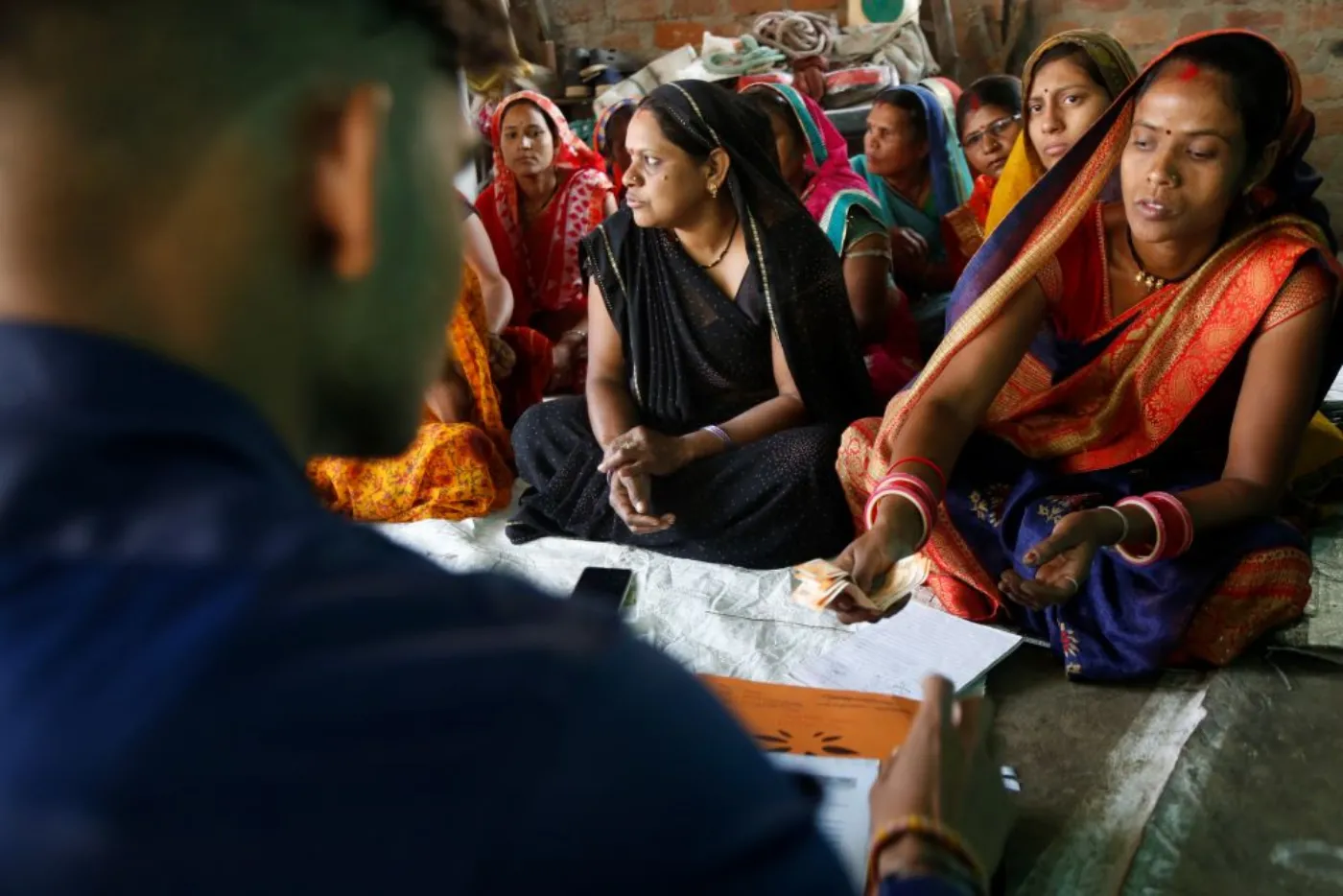By Rahul Singh
Motihari/Hajipur, Bihar: Umesh Kumar (37) runs a bakery and ice cream factory at Chakia town in East Champaran district, the northwestern part of Bihar. He employs four others as well. Umesh mainly depends on the electricity from the North Bihar Power Distribution Company Limited, a government company, to run the factory.
Bihar has done good work in the last decade in the field of grid electricity connection and supply. Yet, small business owners need an alternative and reliable energy source so that their work does not come to a halt in case of power disruptions. Umesh has been utilising solar power for almost two years now, after taking a connection from the mini-grid of Husk Power Systems (HPS) located at Chakia Bazaar.
He purchases a prepaid recharge of Rs 2,500 every month. ‘Solar power has ended our dependence on diesel generators. Even if there is no electricity for five to 10 hours, our work does not stop. Grid electricity is supplied for roughly 20 hours and my monthly bill for that is between Rs 16,000 and 20,000,’ he said.
However, the high price of solar power from the mini-grid is a reason for concern. According to Umesh, it is twice as expensive as the government-supplied electricity, so the prices should be reduced a little.
‘After sunset, enough solar electricity is not available and power trips several times. We then have to talk to the customer care of Husk Power,’ said Rajeshwar Singh (45), the chief worker at Umesh’s factory. Tripping is mainly visible after sunset when the stored electricity is supplied.

Solar power has been beneficial to Kedar Kumar (48), who sells fish at the Chakia market. His shop on the footpath does not have a grid electricity connection. He fulfils his power requirement lasting for a few hours through HPS by recharging Rs 375 every month.
Quite expensive
HPS provides electricity to small businesses and micro, small and mini enterprises (MSMEs) through its solar mini-grid. It has tariff plans and validity similar to mobile phone plans. HPS assistant service engineer Sonu Kumar Rai told 101Reporters that a 50-watt recharge costs Rs 375 and a 100-watt recharge Rs 675 per month. Using the HPS app, the customer can check the power use. The company also provides offers and coupons to attract customers.
HPS mini-grids are mostly located on town outskirts, from where electricity is transmitted in the same manner as grid power. The company plans to increase its mini-grid fleet to 500 in the next three to four years to serve over 50,000 MSMEs, thus helping them increase income by at least 30 per cent. The company has started an agro-processing hub for turmeric in Champaran. It will take up such work in hundreds of locations, helping farmers sell packaged end products rather than raw materials.
Besides Chakia, 101Reporters visited several farms using Husk Power’s electricity at Lalganj town in Vaishali district. Roshan Kumar (21) started a readymade garment brand showroom in Lalganj this year. ‘Solar power from Husk Power’s mini-grid is helpful in my business, but it is more expensive than grid electricity,’ he said. Other consumers echoed his views. Due to the good supply of grid electricity in Bihar and the high prices of solar mini-grid power, it is only an alternative source, and not the main source, for small businesses.
‘Unlike the state grid, our mini-grid power is unsubsidised. So it is more accurate to say that grid power is artificially inexpensive. If we compete on a level playing field, we are more affordable and reliable… We have developed and rolled out a technology roadmap that uses artificial intelligence to lower the electricity cost of consumers systematically,’ HPS Chief Executive Officer Manoj Sinha said in a written response to 101Reporters.
He maintained that grid electricity purchase cost and distribution cost of discoms were higher. ‘Do not forget that discoms remain hugely loss-making entities. They do not have the funds to invest in improving their existing challenges, let alone transmission and distribution infrastructure. Solar mini-grids are already 100% sustainable as our portfolio of hundreds of mini-grids run profitably and our customer retention rate remains above 92 per cent year-over-year. Consumers should add solar PV to their energy mix if they have the capital,’ he said.
‘Although the average supply of electricity in Bihar has improved, the improvement in up time does not address the ongoing dissatisfaction of customers. For example, voltage drop and frequency fluctuation. Lows continue to be a major hindrance in operations and a threat to machinery, forcing most MSMEs to depend on diesel generators to operate their businesses reliably. Husk mini-grid solves these issues and significantly reduces diesel emissions,’ he added.
Regarding troubleshooting, he claimed, ‘Can you imagine a day when a discom can resolve a customer’s complaint in less than 120 minutes? Husk resolves a customer’s complaint in less than 90 minutes on average.’

Two discoms — North Bihar Power Distribution Company Limited and South Bihar Power Distribution Company Limited — function in Bihar. Tata Power is another player in the micro, mini-grid sector, but its contribution is minuscule. It entered the field by launching a 5kW biogas generation plant in Muzaffarpur district in December 2020. Efforts to contact the company via email proved futile.

Greenpeace had worked with village panchayats on solar electrification projects in the past. ‘We successfully electrified Dharnai village in Jehanabad district. But we are not working in the renewable energy sector there right now,’ Greenpeace campaign manager Avinash Chanchal told 101Reporters.
Energy policy and government action in Bihar
According to Bihar’s Renewable Energy Policy, 2017, a decentralised solution such as a mini-grid will play an important role in providing electricity to all households. Local businesses, khadi and rural industries can benefit from it. It said a mini-grid of 500 MW capacity based on solar, biomass, wind and hybrid can be established and that the Bihar government will encourage investments by creating a favourable environment.
A senior official of the Bihar Renewable Energy Development Agency told 101Reporters on condition of anonymity that private parties were encouraged to provide electricity through mini-grids in the early 2010s as Bihar’s electricity system was not good then. Even now, some marshy lands and hilly areas do not have an electricity supply or it is not good.
‘The commercial rates quoted by private companies are not affordable to everyone, hence there should be a new regulation in this regard. Subsidised power is another good option,’ the official said. Bihar Electricity Regulation Commission made regulations in 2010 and 2016 regarding the supply of electricity through mini and micro-grids. ‘No new regulation has come up after 2016,’ he admitted.
According to the September 2023 report of the Central Electricity Authority, Bihar’s installed renewable power capacity is 530.26 MW, whereas its coal-based power generation capacity is 7,396.74 MW. In the 2017 policy, the state had set a target of achieving 3,433 MW of renewable energy capacity by 2022, which includes an installed capacity of 2,969 MW of solar, 244 MW of biomass and bagasse, and 220 MW of small hydropower energy. When compared to the target of 2022, Bihar has up to September this year achieved only 15.43 per cent renewable capacity.
According to the Central Electricity Authority’s Report on Under-construction Renewable Energy Projects published in July, a 250 MW capacity grid-connected ground-mounted solar power plant will be ready by next month in both Banka and Jamui districts. No other big solar project is in the works in Bihar. Bihar Industrial Investment Promotion Policy, 2016, talks about prioritising solar, biomass, hydel and other renewable energy projects and giving incentives. However, such proposals could not gain much momentum and the renewable energy sector did not develop.
According to the Economic Survey of Bihar, 2022-23, agriculture and allied sectors accounted for a share of only 20 per cent in the overall development, despite Bihar being an agrarian state. Solar energy has the potential to provide a much-needed fillip to agriculture.
However, only HPS is the main player in the solar sector. It seems companies are less interested due to a lack of subsidy for mini-grid electricity. Additionally, the Bihar government does not focus on solar much due to policy-level issues. At present, its emphasis is on rooftop solar systems.
Rahul Singh is a Bihar-based freelance journalist and a member of 101Reporters, a pan-India network of grassroots reporters.
About the author(s)
101Reporters is a pan-India network of grassroots reporters that brings out unheard stories from the hinterland.






